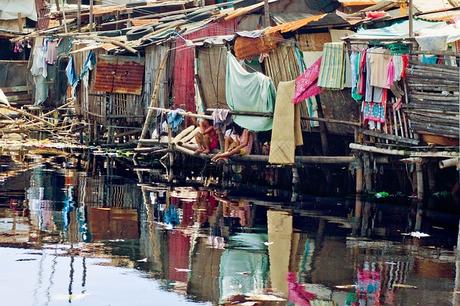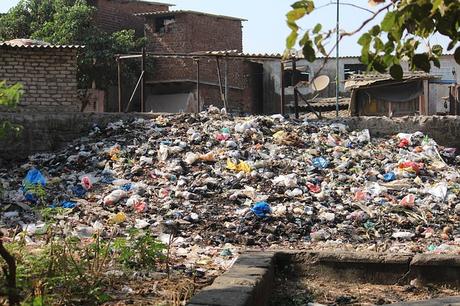Urbanization is the movement of people from the countryside or rural areas to go to more developed urban areas like towns and cities. This leads to rapid growth in these areas. The movements are usually motivated by the belief that urban areas have more to offer in terms of growth, job opportunities, and development than the rural areas.
Urbanization stems all the way from the industrial revolution as it played a big part in bringing people from the rural areas to the developing industrial urban areas, which had factory jobs that rendered agricultural jobs less popular. In modern times, urbanization is taking place on a large global scale as most of the development projects tend to focus more on towns and cities.

This is also evident in both developing and developed countries as urban areas are allocated more resources by governments and municipalities than rural areas, which encourages urbanization. Currently half of the total population of the world live in urban cities, a trend that is definitely going to continue for years to come. Despite urbanization creating opportunities for people who take the leap to look for greener pastures in urban areas, it is often faced with a lot of challenges which this article looks at in-depth:
11 Major Urbanization Problems
1. Overcrowding
Overcrowding is a situation where a lot of people accumulate in a rather limited space that is unable to properly accommodate them without succumbing to the pressures around it. As a result of urbanization, overcrowding is a persistent problem as a large number of people are consistently moving to urban areas on a daily basis.
This leads to cities growing in population and getting crammed when it gets beyond its capacity. When a city is at maximum or excess capacity the people tend to compete over the limited and scarce resources such as electricity, water, transport and the main reason they make the move, employment.
2. Unemployment
Unemployment is another urbanization problem. What is surprising is that a big percentage of youth who are unemployed belong to well raised and educated families. The job opportunities might be more in urban areas and also pay more but as the number of people continues to grow, the jobs become even harder to find and retain.
Companies find themselves retrenching employees as well as putting even more people out of a job. All these factors put together, make the unemployment rate at an alarming high in urban areas.
3. Housing problems
Housing problems tend to develop when people move to cities and overcrowd in them. If the cities were not well prepared for the numbers, the houses become more scarce. It is even harder to settle people who come to cities and don’t end up getting employed or those who settle in as immigrants. Some of these people are unable to afford to build their own homes or even paying rent.
The problem grows in intensity as the materials required to build new houses become more and more insufficient. Limited space also makes it difficult to facilitate construction, and financial resources may even be scarce as they become primarily channeled into other development and social safety net programs other than housing. This only fuels the problem.
4. Development of slums
Urbanization and industrialization make a lot of people move to the urban areas but they do not prepare them for the conditions they are likely to face when they arrive. Urban areas tend to have a high cost of living. The housing problems fuel this even more as all the people who move to urban areas cannot be adequately accommodated.
This leads to the advent and growth of slums as safe havens for those who cannot afford the high costs of rent or lack substantial money to purchase apartments or build homes in urban areas. The slums arise from the construction of houses on underdeveloped or undervalued land due to how scarce and expensive apartments or land is in urban areas.
The houses in slams are often poorly constructed and most of the time lack basic amenities like clean water and proper sanitation. They are built to cater to low-income urban earners. Some of these settlements are even illegal and may be set up next to dumpsites, heavily polluted areas, or natural disaster risk areas such as swampy and mudflow areas.
5. Sanitation problems
Sanitation problems are rampant in urban areas due to the overpopulation that is seen in many of the areas people settle. The local governments find it hard to properly set up and manage a proper sewerage system due to the rampant bulge of the human population. The fast increase in people’s population sometimes overwhelms the local government’s resource capacity to construct the required sanitation and sewage systems.
Sometimes, the existing sewerage systems may not have adequate human as well as the infrastructural capacity to treat and manage the waste. So instead, it is drained into the water sources – polluting them and endangering the health of urban dwellers who may not only contract harmful water-borne diseases but also consume water contaminated with industrial waste and heavy metals.

6. Water shortage problems
Water is very important for sustaining life. The rampant growth of the population in urban areas makes water very scarce as the normal supply becomes strained and inadequate to properly supply the demands of the large population. What is more, the water problems may worsen with the increase in water pollution due to poor sewerage systems and a lack of preventive measures for managing local water pollution.
7. Health hazards
People living in congested urban areas exposes them to a lot of risks. The poor sanitation, water problems, and living in high-risk areas like next to dumpsites leads to disease of all kinds. To make matters worse, people in these areas often do not have proper access to health care services, which makes the disease much harder to cure and at times, they lead to death.
In the slums, people are often diagnosed with diseases like infertility, food poisoning, allergies, asthma, cardiovascular complication, respiratory failure, cancer, and death. This can all be accredited to the overall pollution that is experienced in these urban areas.
8. Degraded environmental quality
This is one of the most common effects of urbanization. The congestion of people in limited spaces and areas reduces the quality of air, contaminates water, and pollutes the noise and land. This leads to very poor environmental conditions for people to live and is often detrimental to the health of these people. There is also the need to improve the infrastructure so as to accommodate the rise in population by erecting new buildings and amenities.
This leads to the destruction of forest and natural habitats in order to acquire the materials required. Industrial waste poured to the river and lakes contaminates the water and the noise brought about by the numerous human activities carried out sums up the many effects urbanizations bring in slum areas.
9. Disposal of trash
Urbanization has led to many factors that have made the trash disposal very difficult. The urban cities produce a lot of waste on a daily basis that they cannot properly dispose of, this subjects the people living in these areas to multiple health risks. The areas that were initially set aside to accommodate trash disposal needs become full, and some of them are inhabited by slum people who move close to such areas.
Diseases are easily spread, with some often spread by the insects and animals that frequent the dumping site areas then get into contact with water that people consume. The trash fills are also located in areas where people live, which subjects them to many of these health hazards.
10. Transportation problems
A lot of people are often moving around in between their workplaces and their homes, this more often leads to traffic jams and congestions. The number of people who own cars is growing every year, especially in urban areas and the public transport system is very unreliable.
The number of cars increases, and as a result of this, the traffic problems continue to worsen. This does not only lead to blockages in traffics but increases the chances of people getting involved in traffic accidents and urban air pollution.
11. Urban crime
The more people are congested in urban areas, the higher the rate of unemployment as the available jobs are not enough to accommodate all. Resources have also become scarce and not everyone has access to the essential social services, which lead the disadvantaged to get into substance abuse, violence, burglary, and organized crime.
Lack of employment also increases poverty, which as a result, makes it even harder for people to get the essential things they need to survive. People then turn to poverty-related crimes such as theft, conning, and organized crime as a way of earning a living.
Such criminal activities, especially those rampant in urban areas due to poverty and lack of job opportunities include kidnapping, robbery, carjacking, rape, and even murder. These acts make cities very hard for people to live in as they are not guaranteed their safety, especially for victims who cannot defend themselves in such situations.
References:
https://www.nationalgeographic.com/environment/habitats/urban-threats/

